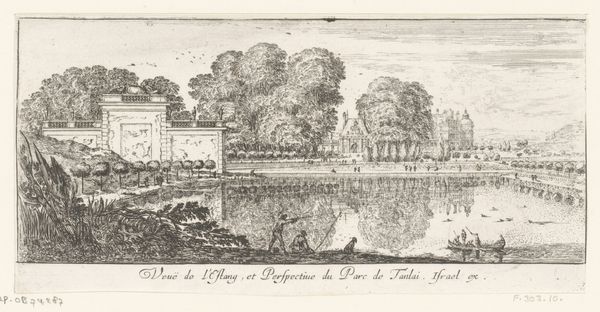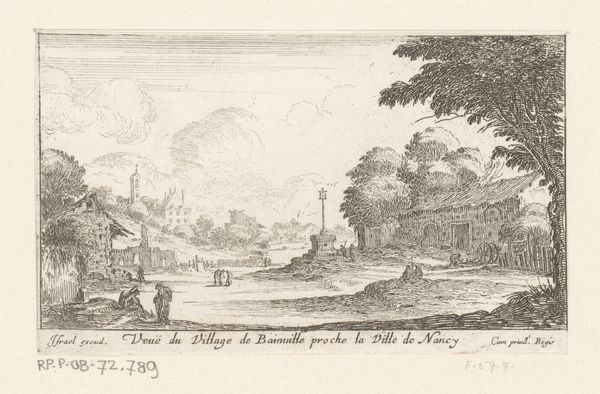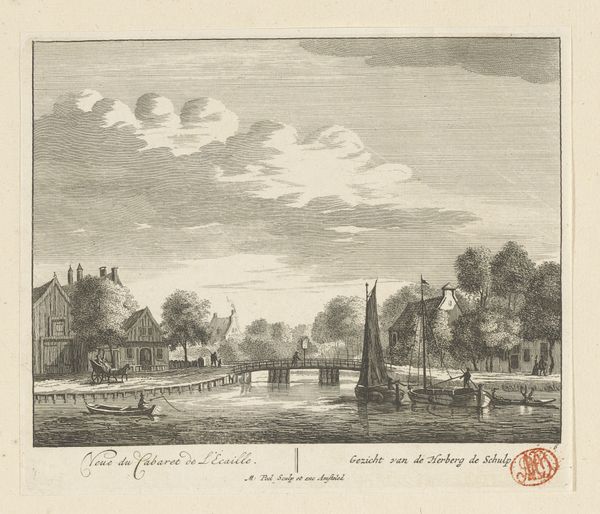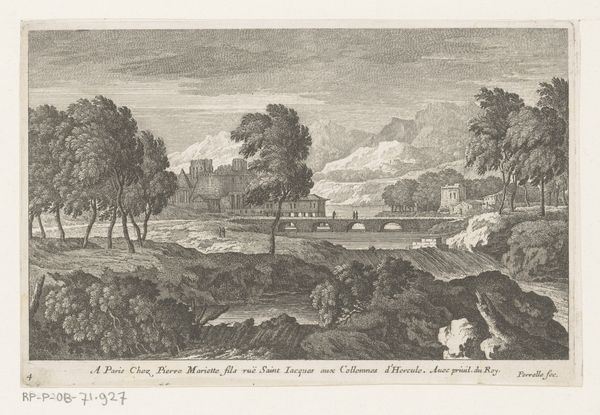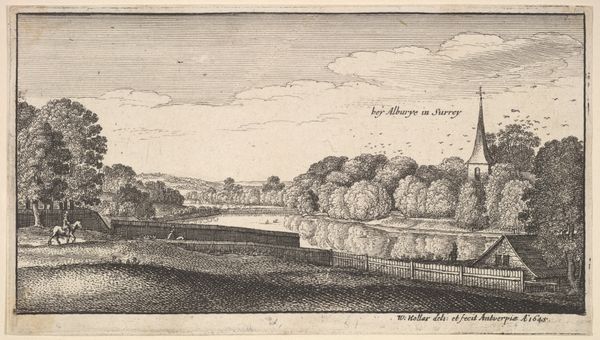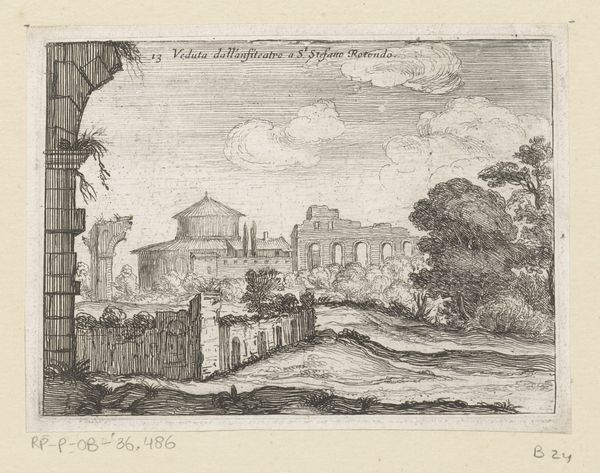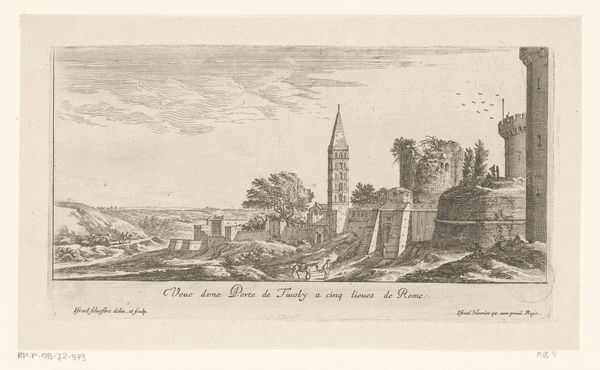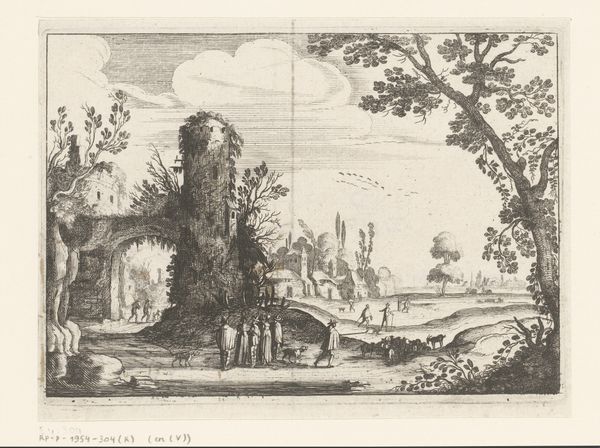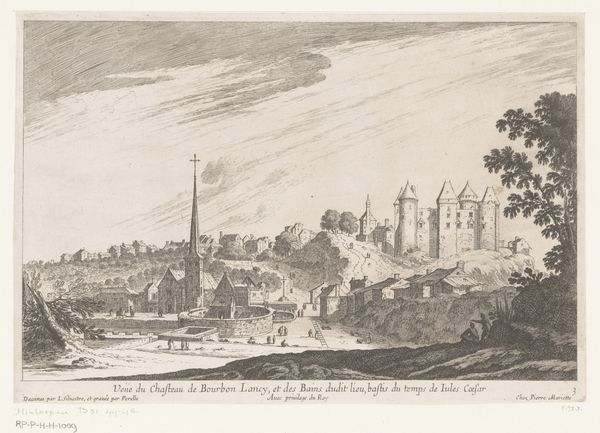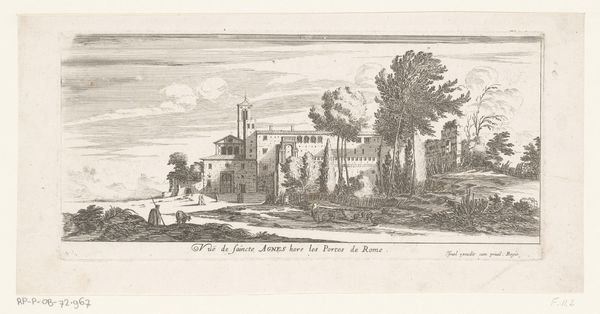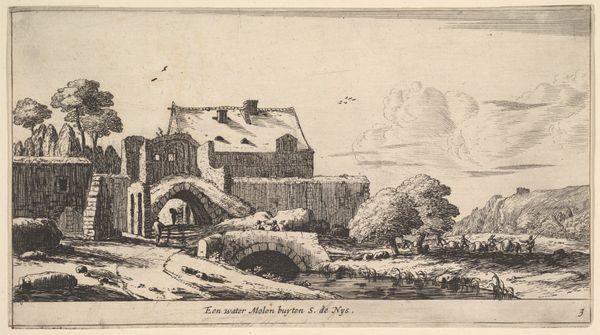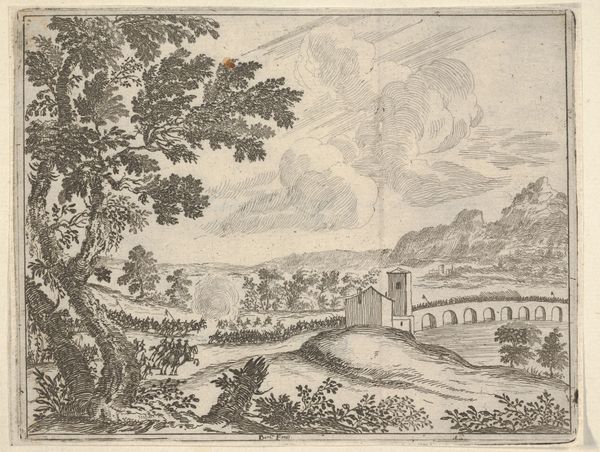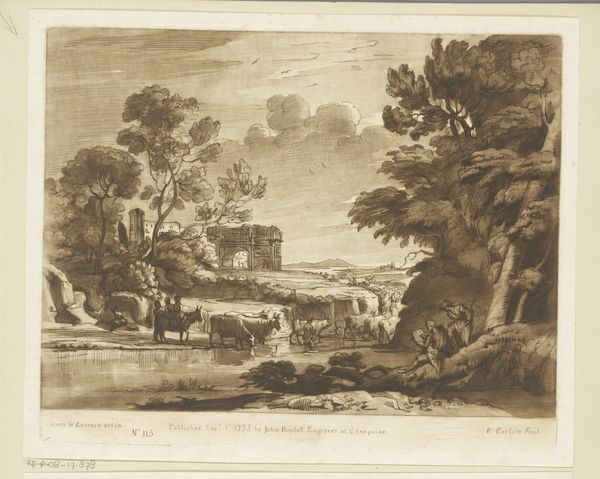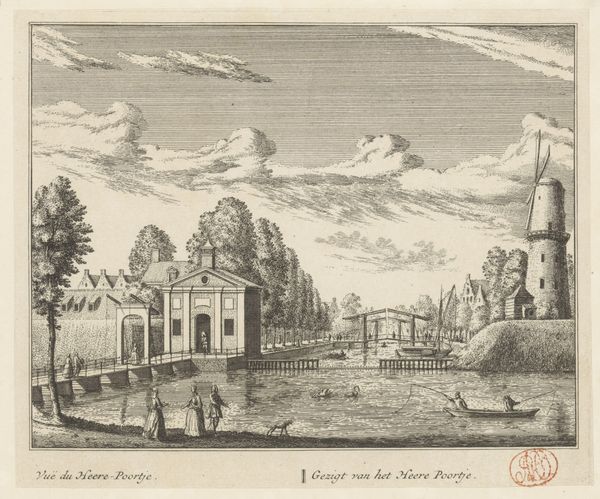
print, engraving
#
baroque
# print
#
pen sketch
#
old engraving style
#
landscape
#
cityscape
#
engraving
Dimensions: height 97 mm, width 169 mm
Copyright: Rijks Museum: Open Domain
Curator: Looking at Israel Silvestre's "View of the City of Lyon," created in 1652, I'm struck by the feeling of ordered calm it evokes. Editor: Calm? To me, it feels quite busy! So much detail packed into a small engraving; look at all the boats, buildings, even the tiny figures walking along the walls. You can almost hear the bustling life along the river. Curator: Precisely, but notice how that activity is contained, framed by the rigid lines of the architecture and the steep hills on either side. Silvestre's style lends itself to an aesthetic that subtly promotes order and hierarchy, something so deeply entrenched within 17th-century societal structures. The ruling class sought to visually translate that era's political ideologies to reinforce their authority, so Lyon isn’t just depicted; it is deliberately represented. Editor: Right, and speaking of representations, it's a print. As a multiple, this image would have circulated, standardizing the image of Lyon for viewers beyond the city itself. Considering Silvestre's role as a draughtsman to the King, how did the engraving’s mechanical reproduction reflect Louis XIV's ambitions to create a dominant, reproducible image of France itself? Did these images of order bolster the crown's vision? Curator: A poignant observation! The print form absolutely played a role in disseminating royal power. I agree that these engravings became symbolic representations, and Silvestre utilized the tools of the time to shape perceptions and expectations around governance. Editor: The way he handled the burin is fantastic. Look at the differing weights of the lines that define architectural mass versus suggest the delicate foliage on the hillsides; this engraving process reveals a keen understanding of materials. This print isn’t just a landscape. It's a social and material artifact—a record of labor, production, and dissemination in its time. Curator: Indeed, viewing art as a process embedded within its unique context gives us deeper insight into its multifaceted character. Editor: Yes, each examination enhances our collective understanding of a work’s contribution, whether through an exploration of societal ideologies or a deep look at the tools used to create art.
Comments
No comments
Be the first to comment and join the conversation on the ultimate creative platform.
